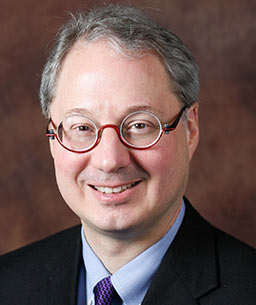 Reports on the ADI Team Congress 2011
Reports on the ADI Team Congress 2011
Thursday 14 - Friday 15 April
Manchester Central Convention Complex
Petersfield, Manchester M2 3GX

Integrating the process for predictable aesthetics into clinical practice
Speaker: Professor Clark M Stanford DDS PhD - USA
Reported by Sunny Kaushal

There were no tips and tricks but just a solid underlying tone to the talk emphasising the need for accurate systematic evaluation of all cases while taking all risk factors and parameters in to consideration. Long-term predictability and acceptable aesthetic outcomes are the goal.
He started by posing some questions:
“What defines the aesthetic zone and what is the aesthetic challenge?
“What are the patients’ desires, expectations and capabilities?”
“What are our own expectations?”
He joked that in the Midwest where he is from, the aesthetic zone is typically from canine to canine whereas in California it is usually from 3rd molar to 3rd molar! He commented that we all have our own bias on aesthetic issues but this can be quite different from the patients’ perspective.
It is important to keep in mind that when dealing with predictable aesthetics we are talking about a multi-factorial issue. These can be broken down in to the following groups:
- The patient
- The care team
- The hard and soft tissues
- The Implant / Abutment
- The treatment
The Patient
Professor Stanford addressed the patient factor using two distinct terms:
Strategic care management
This takes in to consideration the objectives and resources of the patient.
How much can the patient afford?
How much time does the patient have for a long protracted treatment plan?
Is there any impact on the patients’ family?
And
Strategic care thinking
This is more directly patient centred:
- Age
- Health status
- Biotype
- Periodontal anatomy
- Periodontal history
- Occlusion
- Key teeth
- Recall history of the patient
These patient factors allow the team to judge in advance what can be reasonably expected. It is important to articulate to the patient up front what the outcomes will be from any proposed treatment.
The Care Team
A team approach is essential during the planning, treatment and monitoring stages to assist in achieving a predictable aesthetic outcome.
The capabilities of the care provider team must be borne in mind before making any promises and it is important that the entire team understands the issues and objectives.
Hard and soft tissues
An accurate and thorough ridge assessment is essential in all cases of implant dentistry. In predictable aesthetics however, the concern after achieving the correct appearance is whether there is a possibility of recession.
So an important question to ask is “Can I identify the patients’ of highest risk of recession and how does that change my care management strategy?”
The three biologic determinants are:
- Thickness of soft tissues
- Distance from the osseous crest to the free gingival margin
- The thinner the plate the greater the risk
The Implant / Abutment
There is an issue in the trans-mucosal environment. This is regardless of implant manufacturer in that there is always an inflammatory infiltrate. The presence of this inflammation can be contributory to a recession process and thus ultimately will have a negative impact on aesthetics. It is associated with the implant/abutment junction.
Prof. Stanford commented that:
a. We can ignore it
b. We can move it by horizontal offset and platform switching
c. Or we can minimise it using a conical connection
So attention needs to be made regarding the type of implant to be used and the abutment connection. What are the features then for implant design that can be associated with the process of this peri-implant inflammatory infiltrate?
Abutment/implant connection issues are related to:
- The abutment connection type
- Material of abutment
- Small movements can lead to a special kind of corrosion called threading.
This can lead to and amplify this pro-inflammatory infiltrate that is present in the surrounding tissues.
Further factors to consider are:
- Macroscopic design
- Biomechanics
- The environment the implant finds itself in: (poor OH, smokers, host bio-film, host genetics)
- Surface implant characteristics
- Biomaterials
The Treatment
Total patient care and total patient assessment in a systematic approach is necessary to achieve predictability. Professor Stanford joked that even as a dean of a dental school he still carries out his own wax ups…………occasionally!
Prof. Stanford stressed the need to carry out a thorough assessment and diagnosis before embarking on the treatment. He especially advised to:
- Identify risk factors
- Establish the tooth position
- Respect the arch form
- Inspect the periodontium
- Evaluate the position of the cemento-enamel junction
- Consider the influence of the extraction on the treatment sequencing
Prof. Stanford described the three tool concept:
This is a concept based on past research around which an assessment can be based and is used in the department:
- Head of implant is to be placed 3mm below the planned C-E junction
- Implant to be placed 2mm to the palatal / lingual
- Bone / mucosa response
An adjunct to this is to consider the:
- Mesio-distal position
- Proximity of teeth
- Angulation of adjacent roots
- Prefer at least 1.5mm between adjacent tooth and the implant
Ensure the eventual outcome is prosthetically driven Prof. Stanford advised.
Use a diagnostic wax up and follow a logical stage-by-stage approach.
Use transitional restorations to develop the soft tissue contours and to assist in the construction of the final restoration. Overall, evaluation is the key.
Professor Stanford left with this endnote:
“An education is what is left when your knowledge becomes obsolete. Intelligence is knowing the difference between your knowledge and your education.”![]()
